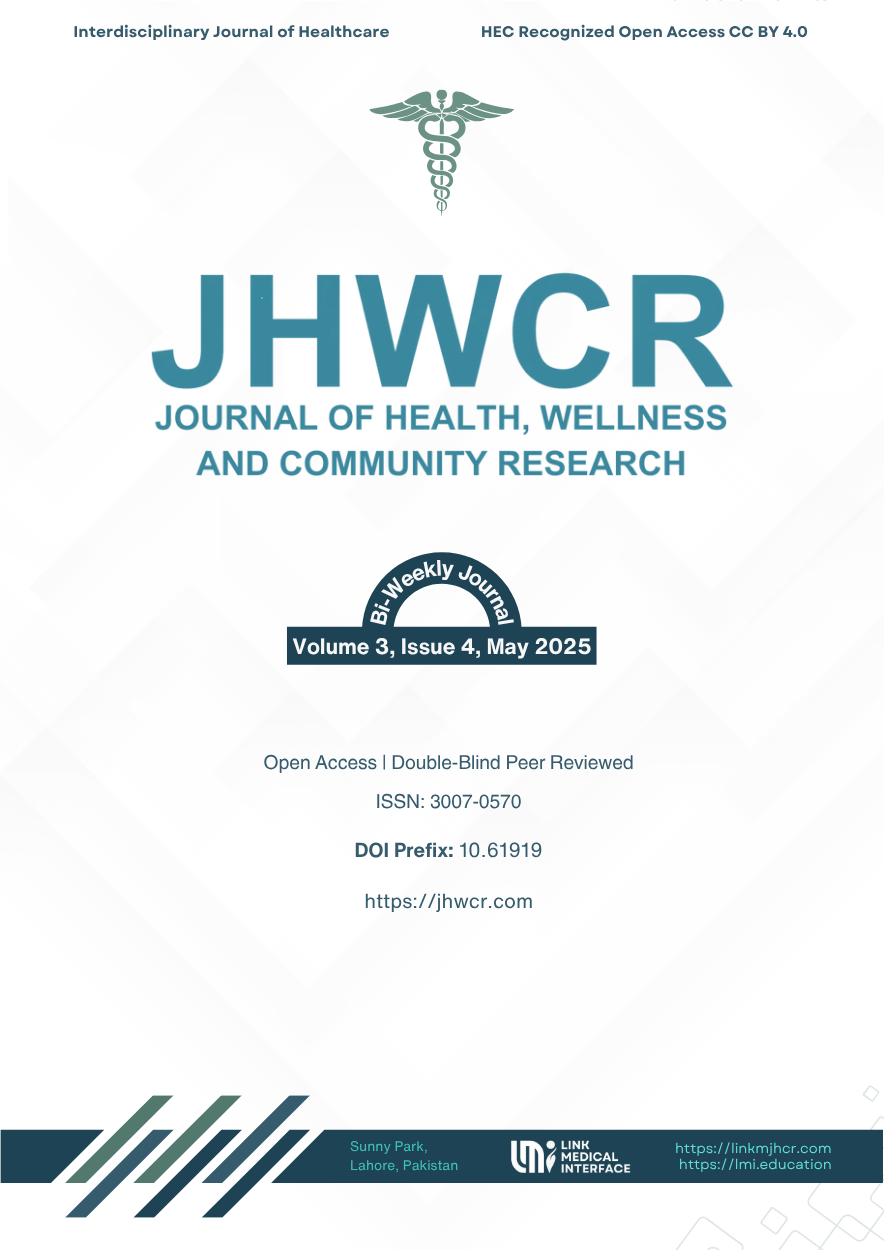Assessment of Complications Associated with Metallic Plate Removal in Maxillofacial Surgical Patients
DOI:
https://doi.org/10.61919/q995s357Keywords:
Maxillofacial Surgery, Titanium Plate Removal, ORIF, Postoperative Complications, Infection, Mandible, Oral Surgical ProceduresAbstract
Background: Metallic hardware is widely used in oral and maxillofacial surgery for skeletal stabilization, yet its long-term retention can lead to complications such as infection, discomfort, and plate exposure. Objective: This study aimed to evaluate the complications associated with metallic plate removal in maxillofacial surgical patients and to analyze the associations between patient demographics, surgical characteristics, comorbidities, and the causes, sites, and timing of hardware removal. Methods: A cross-sectional observational study was conducted on 70 patients who underwent metallic plate removal following oral and maxillofacial surgery at Bacha Khan College of Dentistry, Mardan, between March and August 2024. Patients aged ≥18 years were included based on clinical indication for plate removal; those with incomplete data or who declined consent were excluded. Data on demographics, comorbidities, surgical type, and removal characteristics were collected using standardized forms. Ethical approval was obtained in accordance with the Declaration of Helsinki. Statistical analysis was conducted using SPSS v26, employing descriptive statistics and Chi-square tests to assess associations at a significance threshold of p < 0.05. Results: Mandibular ORIF was the most frequent procedure (35.7%), with infection (31.4%), pain (21.4%), and plate exposure (17.1%) as leading causes of removal. The majority of plates were removed after >24 months (31.4%). Significant associations were observed between age and cause (p = 0.035), site (p = 0.041), and duration (p = 0.028) of removal. Surgery type and comorbidities also significantly impacted removal patterns (p < 0.05). Conclusion: Plate removal following maxillofacial surgery is primarily driven by infection and discomfort, particularly in younger patients and those undergoing mandibular fixation. Patient-specific factors should inform follow-up protocols and surgical decision-making to enhance postoperative outcomes and reduce secondary intervention rates.
Downloads
Published
Issue
Section
License
Copyright (c) 2025 Javeria Saeed, Mehwish Gul, Fawad Ahmad, Wasif Khan, Hareera Ahmad Khan, Muhammad Adil (Author)

This work is licensed under a Creative Commons Attribution 4.0 International License.


